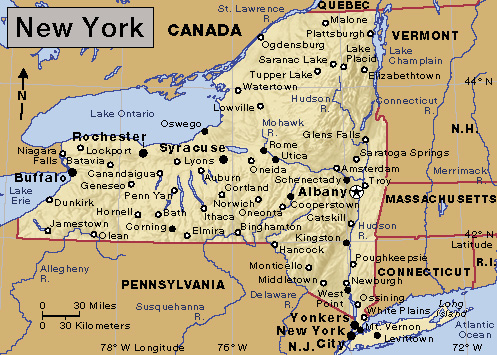Utica, << YOO tih kuh, >> New York (pop. 65,283), is an important commercial and industrial center in the Mohawk Valley along the New York State Canal System.

Utica covers an area of about 17 square miles (44 square kilometers). With Rome, New York, the city forms part of a metropolitan area with a population of 292,264.

During the late 1800’s and early 1900’s, Utica ranked first among New York cities in the production of cotton cloth. In the 1940’s and 1950’s, many textile companies moved to Southern states. Utica factories then started to produce such items as aircraft parts, electronic equipment, power tools, and processed foods. Utica is also a trading center for farmers of the Mohawk Valley.
Utica lies on the only water-level pass through the Appalachian Mountains and is a major terminal on the New York State Canal System. The city is home to Utica College. The State University of New York Polytechnic Institute has a campus in nearby Marcy. Hamilton College is in nearby Clinton. Utica is also home to a zoo, several museums, and other places for entertainment and recreation.
A king’s grant to British governor William Cosby and his associates in 1734 included the site of Utica. Fort Schuyler was built on the site during the French and Indian War (1754-1763). Utica was incorporated as a village in 1798. The name is that of an ancient North African town and was drawn from suggestions placed in a hat. Utica was chartered as a city in 1832. It has a mayor-council form of government and is the county seat of Oneida County.
